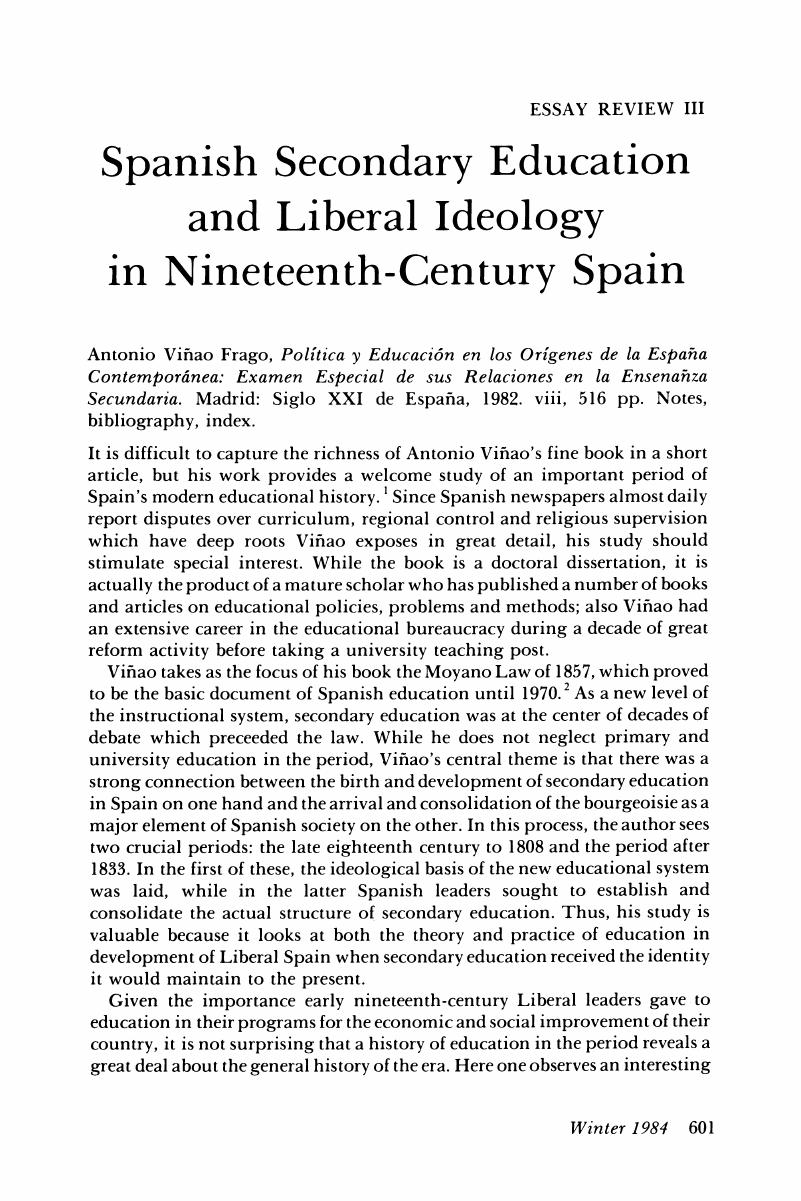No CrossRef data available.
Published online by Cambridge University Press: 24 February 2017

1. For those unfamiliar with Spanish scholarship, Viñao's title needs explanation. In Spanish historical parlance, the “contemporary” age begins about the time of the French Revolution.Google Scholar
2. The law was named for its principal author, Moyano, Claudio (1809–1890), a distinguished university professor and administrator who was Minister of Public Works.Google Scholar
3. It is now common to hear that Spain's centralized educational system was created in imitation of the French one. Viñao is able to show that centralization was actually a product of the government's need during the Carlist war for an effective national administrative network to implant programs and that opponents of the system created the myth of its French origins to attack the 1845 plan and its successois. Many Spaniards who favored Liberal reforms enlisted in the service of Joseph Bonaparte, and these afrancesados were considered the quislings of the early nineteenth century. The accusation that those who promote change are trying to ruin Spain by importing foreign culture has been common in the nation's modern history.Google Scholar